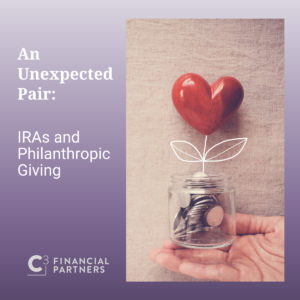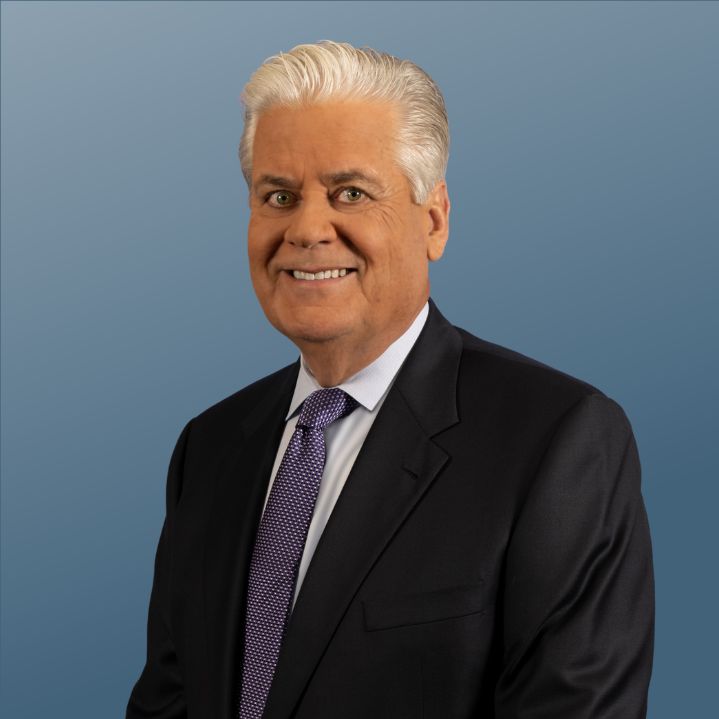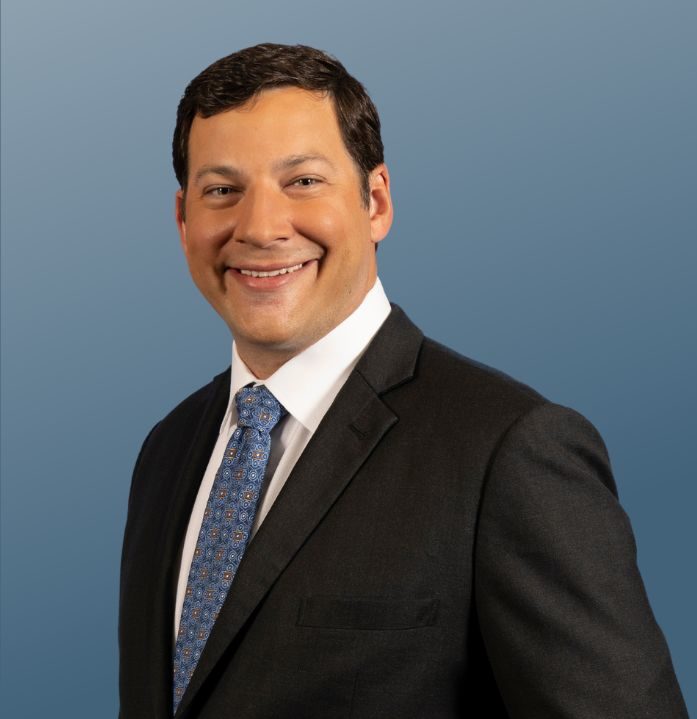The Setting Every Community Up for Retirement Enhancement (SECURE) Act 2.0 was signed into law on Dec. 26, 2022, as part of the Consolidated Appropriations Act, of 2023. SECURE Act 2.0 (“Act”) made significant changes to the rules for individual retirement accounts (IRAs) and employer plans. Most written summaries of the Act focus on the individual changes impacting how Americans fund and take distributions from their IRAs. While understanding the Act’s key provisions are important, for affluent individuals focused on preserving, protecting, and transferring wealth, there may also be crucial planning steps to consider.
The Act’s rules on distributions can mean more money will be taxed as income and potentially subject to estate taxation. Further concerns may arise from the IRA owner’s loss of control of the money and from those funds becoming subject to the creditors of the IRA’s beneficiaries. In light of the Act’s provisions, C3 Financial Partners is working with advisors and their clients on taking the necessary steps to guard their legacies.
Clarity
SECURE Act 2.0 Provisions
The three key provisions in the Act related to IRAs are:
- The age to start taking RMDs (required minimum distributions) increases to age 73 this year and to 75 in 2033.
- The penalty for failing to take an RMD will decrease to 25% of the RMD amount (from 50% currently) and 10% if corrected in a timely manner.
- Catch-up contributions will increase in 2025 for 401(k), 403(b), governmental plans, and IRA account holders. The current catch-up amount is $1,000 but will be indexed for annual increases for those over age 50 and, for those aged 60 to 63, the catch-up will be $10,000.
 Perhaps of most interest to those who do not intend to use part, or any, of their IRA balance, is the ability to increasingly put off RMDs and to see their balances continue to grow. This means a larger distribution may eventually be forced upon most non-spouse beneficiaries who inherit the IRA and will be required to withdraw the full balance within 10 years. These beneficiaries are often adult children and grandchildren.
Perhaps of most interest to those who do not intend to use part, or any, of their IRA balance, is the ability to increasingly put off RMDs and to see their balances continue to grow. This means a larger distribution may eventually be forced upon most non-spouse beneficiaries who inherit the IRA and will be required to withdraw the full balance within 10 years. These beneficiaries are often adult children and grandchildren.
In addition to the loss of control resulting from taking away decisions about when and under what conditions heirs should receive money, the forced distributions to beneficiaries can remove a large amount of wealth from creditor-protected IRAs and expose it to beneficiaries’ present and future creditor claims, including those of former spouses. This triple hit of a loss of control increased taxation, and exposure to creditors is not a welcome result of legislation intended to promote savings!
Fortunately, there might be steps that can be taken immediately to replace qualified IRA funds that may be lost to taxation while protecting the funds from creditors, reducing a taxable estate, and, if desired, benefiting a client’s favorite community organization.
Confidence
Wealth Replacement
Since the Act still requires RMDs while accelerating the payouts of IRAs to beneficiaries, those wishing to pass on accumulated retirement funds to children or grandchildren can be left frustrated. The loss of the ability to stretch the distributions of an IRA over the lifetime of a grandchild can have a major impact on a financial plan. One solution is to combine life insurance with a trust.

An IRA owner can direct their post-tax RMDs into a trust and use a combination of annual gift tax and lifetime estate tax exemptions to fund a purchase of a life insurance policy. The trust would be the owner and beneficiary of the policy and the intended heirs of the IRA would be the beneficiaries of the trust.
When the insured IRA owner dies and the policy death benefits are distributed to the trust, the proceeds will be tax-free to the trust and paid out as directed by the trust agreement. In addition to ‘stretching’ out the money from an IRA to the heirs by converting post-tax distributions to trust-owned life insurance, the heirs (assuming the heirs are the same for the IRA as for the trust), will not be receiving fully taxable distributions from an inherited IRA.
Wealth Protection
Another benefit of establishing an irrevocable trust that will ultimately be funded with life insurance policy proceeds is that both the policy and the resulting lump sum policy proceeds will be held by the trust and not the trust’s beneficiaries and subject to the creditors of those beneficiaries. The trust can be arranged so that the amount and timing of distributions to beneficiaries can be either established in the trust documents or left to the discretion of the trustee. This arrangement provides more security for wealth marked for generational transfer over the payout requirements for an inherited IRA.
Supporting the Community
While it may be ideal to exhaust an IRA’s balance while living in order to make gifts to an irrevocable trust used to purchase life insurance, it may be prudent to leave some funds in an IRA. Once a strategy for wealth replacement and wealth protection is in place, switching the IRA beneficiary to a tax-exempt community organization can produce some benefits.
First, a favored community organization would be supported. Then, of equal importance, the charitable gift could offset estate taxes or provide other tax relief. This gift can even be equalized to beneficiaries by increasing the amount of death benefit purchased in the trust.

Coordination
This article covers only some of the changes made by SECURE Act 2.0. Advisors should create a simple list of the changes, including effective dates, and determine which ones affect clients. This list can be used to help identify which clients should be contacted regarding changes.
As described, there are several planning steps to carry out a strategy to make sure clients benefit from SECURE 2.0 and are not disadvantaged. C3 Financial Partners can support an advisor with their relationships by serving as a knowledgeable resource and a valuable part of a planning team. We look forward to helping our clients and their advisors gain clarity in their goals and objectives, confidence that they are making the right decisions, and coordination with other advisors.
This material has been prepared for informational purposes only and is not intended to provide any specific advice or recommendations. The information provided has been derived from sources believed to be reliable but is not guaranteed accurate and does not purport to be a complete analysis of the material discussed. Any tax advice contained herein is of a general nature. You should seek specific advice from your tax professional before pursuing any idea contemplated herein.
Securities offered through Valmark Securities, Inc., member FINRA, SIPC. Investment Advisory Services offered through Valmark Advisers, Inc. a Registered Investment Advisor, 130 Springside Drive, Suite 300, Akron, Ohio 44333-2431, 1.800.765.5201. C3 Financial Partners, LLC is a separate entity from Valmark Securities, Inc. and Valmark Advisers, Inc.
 ™
™



